Explore our library, where insights, press articles, and events are organized by tags, making it easy to find relevant topics.
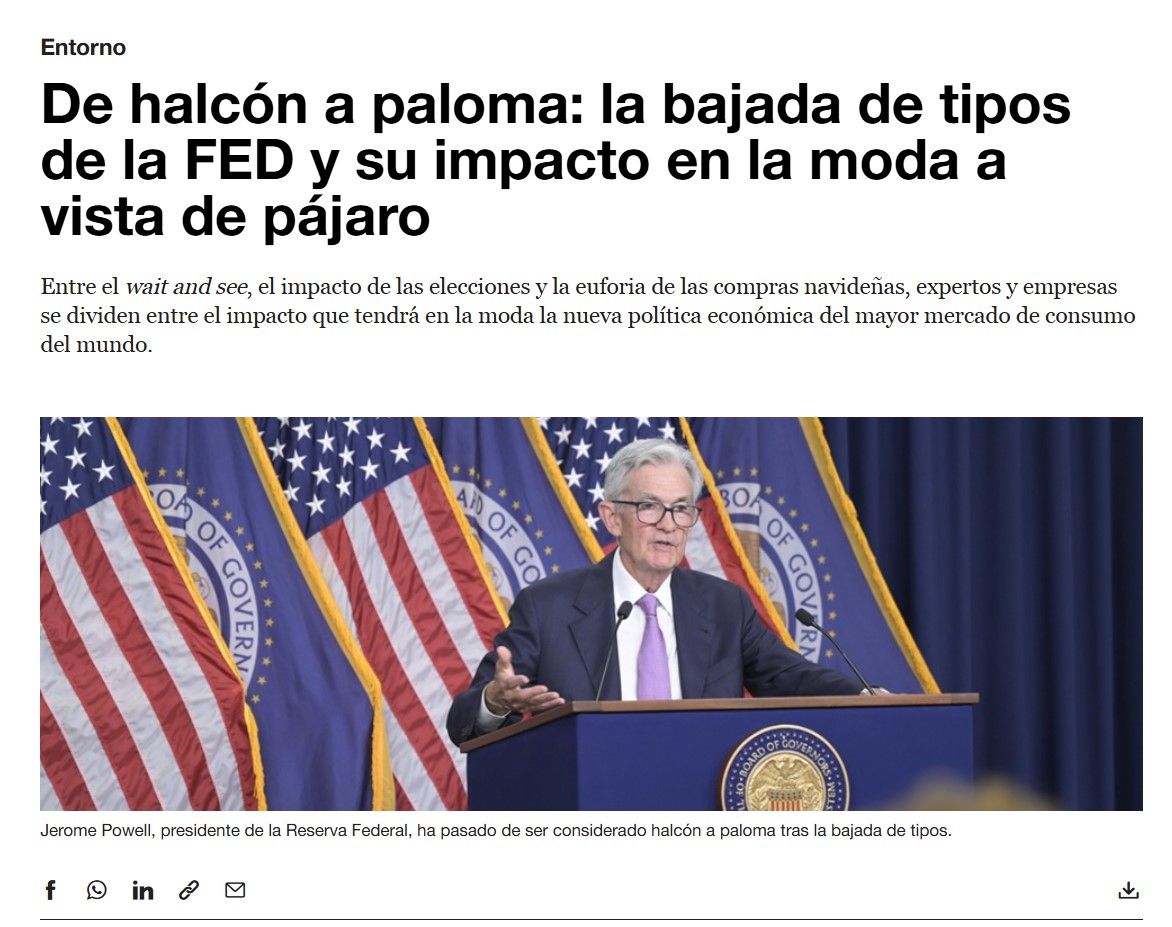
press September 2024 From hawk to dove: the Fed's rate cut and its impact on fash...
Modaes.com by Pilar RiañoIn a discussion with Modaes journalists, Achim shares his perspective on the impact of interest rates on the fashion industry.
The FED’s recent interest rate cut, the first in over four years, has sparked mixed reactions in the fashion industry. Some experts believe it could stimulate consumer spending, especially during the holiday season, while others think its effects may take time to materialize, and the upcoming U.S. elections could heavily influence its impact. The rate cut is expected to weaken the dollar, potentially reducing costs for European fashion companies sourcing materials from abroad but making exports to the U.S. more expensive.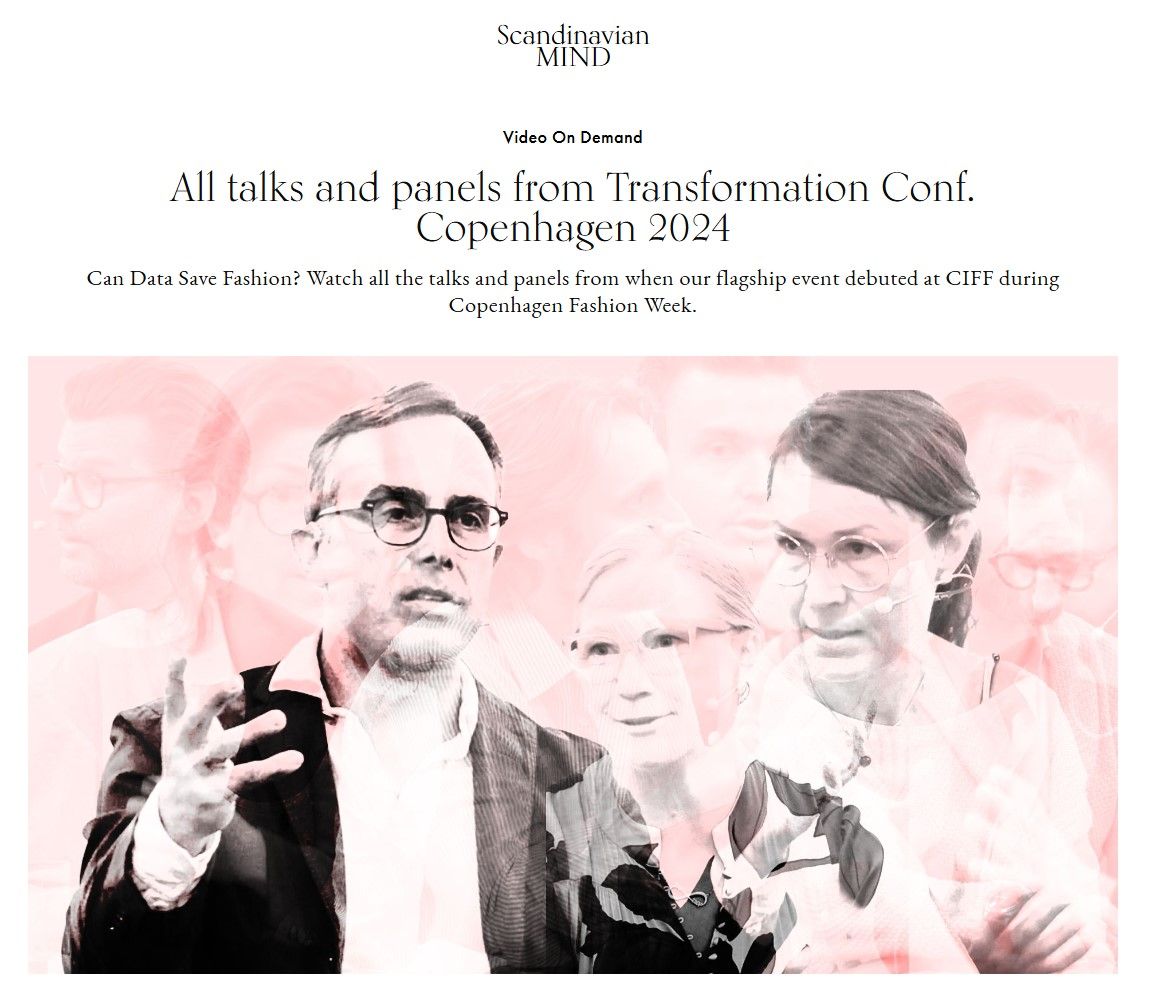
press August 2024 Scandinavian MIND Transformation conference Copenhagen 2024
scandinavianmind.comA fireside chat with Achim and Konrad Olsson at the Scandinavian MIND Transformation conference in Copenhagen.
Achim Berg reflects on the current state of the fashion industry, including the post-COVID boom and the industry's hard landing in the face of multiple global crises, a challenging macro economic environment, and weakening consumer demand. He also reflects on his personal career, the lessons learned at McKinsey, and provides insight into the plans for his new company.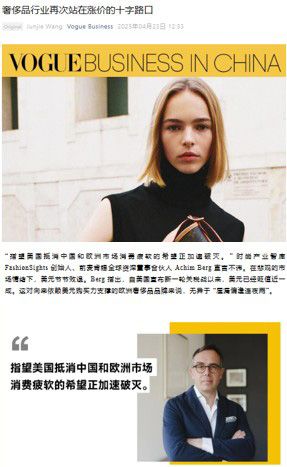
press April 2025 Luxury industry at the crossroads of price increases once ag...
Vogue Business China by Junjie WangAchim shares his perspective on the impact of currency shifts and gold prices on luxury.
With the luxury market facing persistent headwinds and a prevailing sense of uncertainty, Achim notes that hopes for the US to offset weakening demand in China and Europe are quickly fading. Since the announcement of new tariffs, the US dollar has dropped nearly 10%, adding yet another hurdle for American consumers purchasing European luxury goods. Market sentiment, Achim emphasizes, is closely linked to consumer psychology - while many still have the financial means, they increasingly lack the confidence and willingness to spend. In this environment, gold has re-emerged as a global safe haven. Its surge is weighing on the luxury sector, not only diverting discretionary spending away from luxury, but also driving up costs for hard luxury items like jewelry and watches.
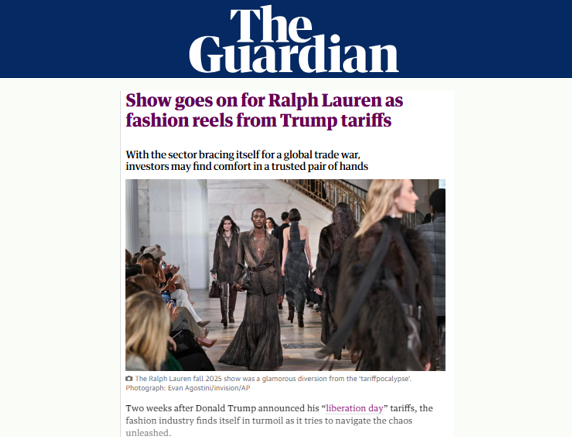
press April 2025 Show goes on for Ralph Lauren as fashion reels from Trump ta...
The Guardian by Chloe Mac DonnellAchim shares his view on navigating uncertainty and brand priorities.
Fashion and luxury brands are particularly vulnerable to Trump’s newly imposed tariffs on imported goods, due to the industry’s heavy reliance on Asia-centric supply chains. With ongoing confusion around the scope and timing of these measures, many brands remain unsure of the actual impact. Yet Achim emphasizes that moments of uncertainty are exactly when brands should reassess what they do. He highlights the importance of leaning into marketing and brand events to strengthen emotional connections and reinforce brand positioning. Ralph Lauren embraces this mindset, going ahead with his show despite the volatility triggered by Trump.
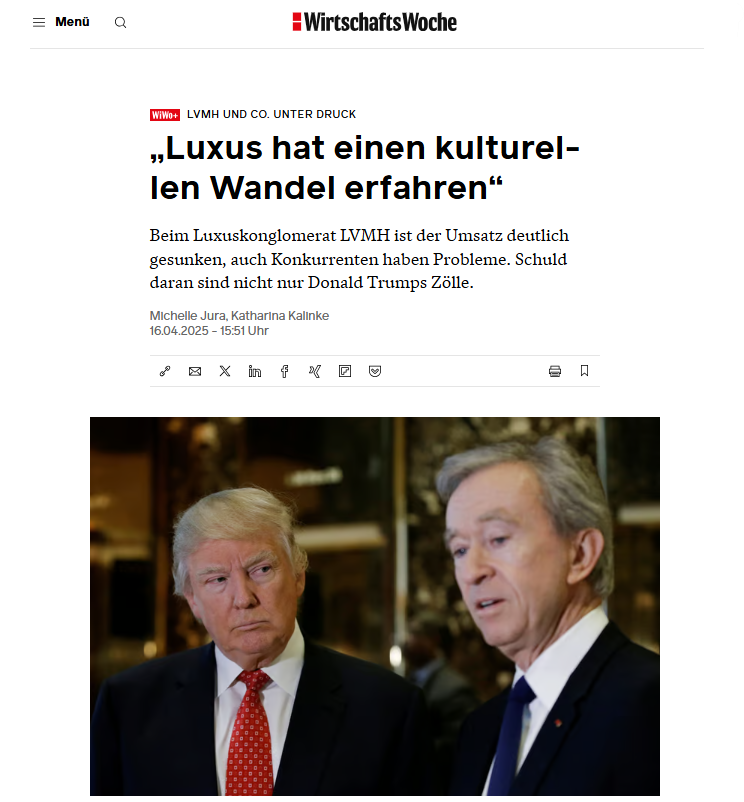
press April 2025 Luxury has experienced a cultural change
WirtschaftsWoche by Michelle Jura & Katharina KalinkeAchim comments on the democratization of luxury and the industry’s structural problems.
Following LVMH's weak quarterly results and falling share price, the downturn goes far beyond Trump's looming tariffs. They are just the latest piece in a much larger, already crumbling puzzle. Economic uncertainty continues to weigh on consumer confidence, but attributing the decline solely to external factors oversimplifies the luxury sector's deeper structural problems. Achim points out that internal missteps have also played a significant role. Years of aggressive price increases and efforts to make luxury more accessible to a broader audience have eroded the exclusivity that once defined luxury brands. He describes this as the democratization of luxury, a reflection of a broader cultural shift with a new understanding of luxury that is more experiential and value-driven than materialistic.
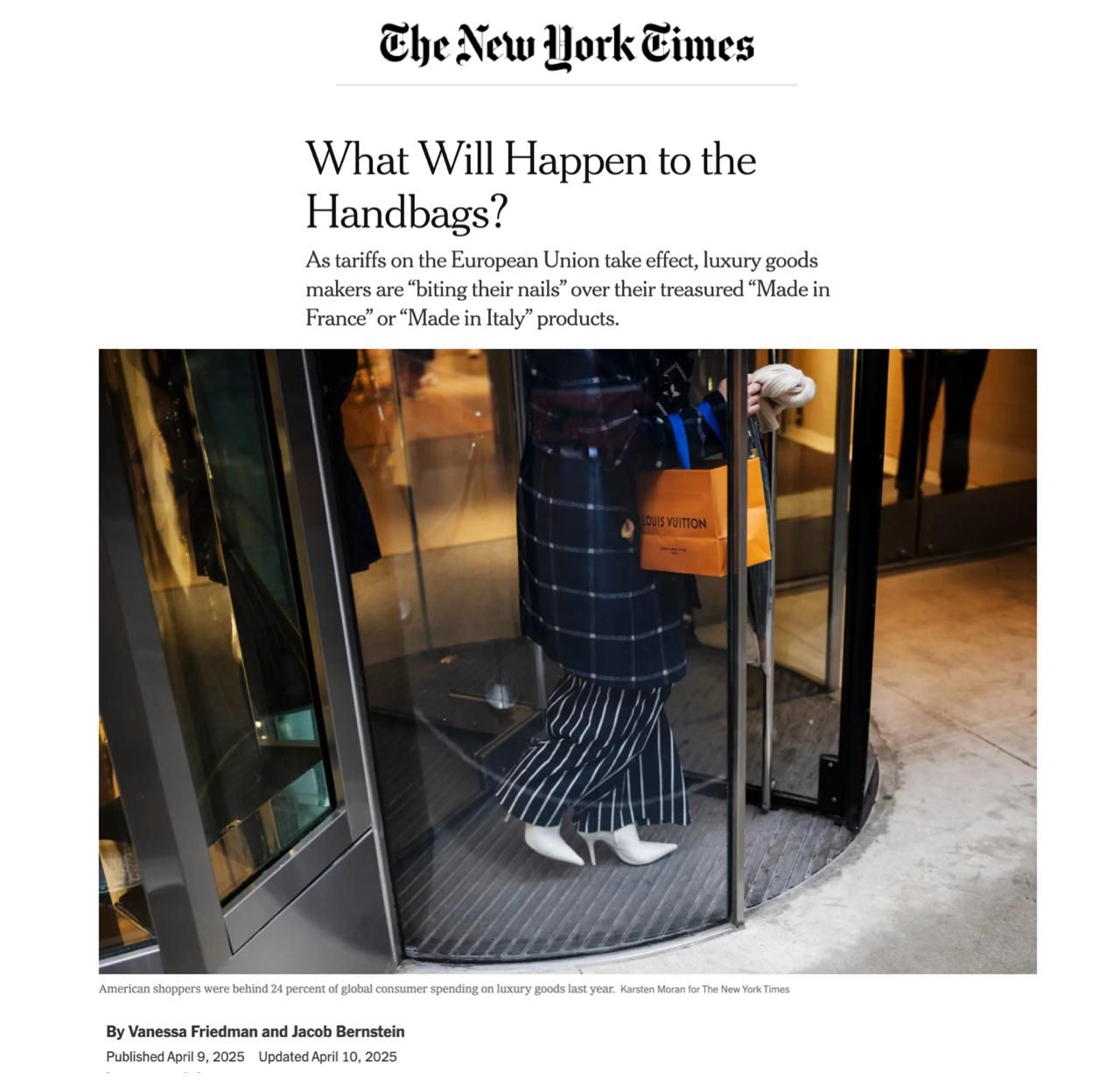
press April 2025 What Will Happen to the Handbags?
The New York Times by Vanessa Friedman & Jacob BernsteinAchim comments on how tariffs impact the luxury industry.
The US has long been seen as the next main growth engine for the luxury industry, but Trump's new tariffs have turned it into a source of concern. These measures act less as a tax on Europe and more as a burden on American consumers. Aside from Louis Vuitton's factory in Texas, no major brand is considering shifting production to the US, as "Made in Italy" and "Made in France" remain central to their identity. While some brands may be able to absorb the additional costs, years of price increases have already tested the limits of consumers. Although the luxury sector is more resilient than lower-margin segments, Achim warns that it won't remain untouched. The majority of luxury buyers are affluent or aspirational consumers - groups that are now hesitant amid market volatility and recession fears. In a climate of uncertainty, it is not necessarily wealth but confidence that drives indulgence, and right now, uncertainty is the prevailing mood, says Achim.
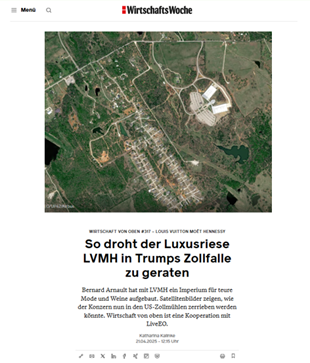
press May 2025 How luxury giant LVMH threatens to fall into Trump's customs...
WirtschaftsWoche by Katharina KalinkeAchim comments on the impact of tariffs and shifting dynamics in America’s role for luxury
Trump’s imposition of new tariffs is placing renewed pressure on European luxury houses. While no brand is seriously considering relocating production to the US, LVMH - already operating a manufacturing site in California - is the only one exploring an expansion of its American operations. The move aligns with Trump’s pro-domestic manufacturing narrative but remains largely symbolic, as Achim notes, given that a meaningful return of textile production to the US would require full automation - a challenge that has repeatedly proven unfeasible in the past. Beyond tariffs, Achim highlights the growing impact of luxury’s democratization, with middle-class consumers being the first to scale back spendings amid economic uncertainty. Even if tariffs prove temporary, he adds, they fail to restore the level of investment security needed. Mounting fears of a global recession and eroding investor confidence are steadily weakening America’s standing as a long-term growth engine for the industry.
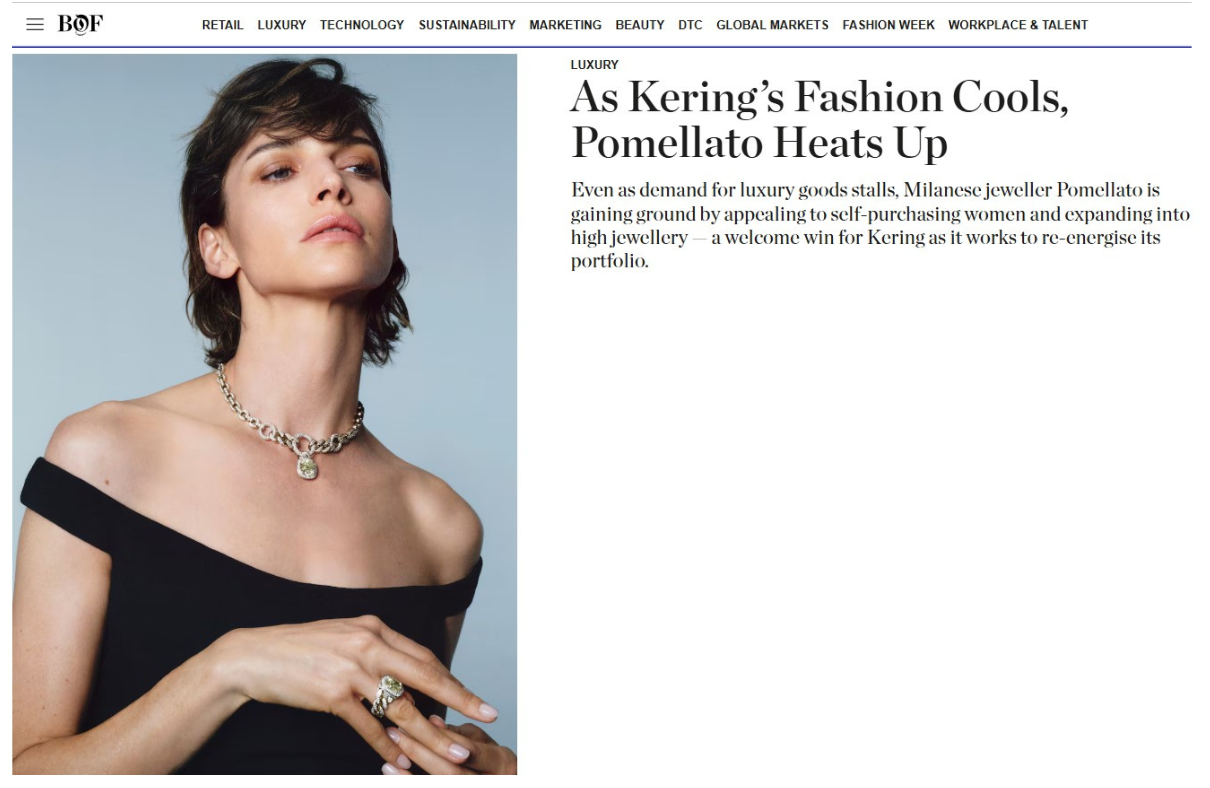
press June 2025 As Kering’s Fashion Cools, Pomellato Heats Up
BoF by Ming LiuAchim discusses how high-end jewellery is outperforming other luxury categories in times of economic uncertainty.
The Pomellato brand stands out as a positive performance outlier within parent company Kering, offering a blueprint for a shifting luxury landscape and overall industry phenomenon. While the demand for many luxury goods has softened, Achim notes that jewellery is gaining appeal due to its timeless nature and intrinsic value. Compared to other luxury items, it is viewed as a more solid, investment-worthy purchase. Achim also highlights that demand remains robust among high-net worth individuals, who are less affected by economic or geopolitical concerns. For brands, this makes high-end jewellery a strategic category to connect with a more resilient target segment.
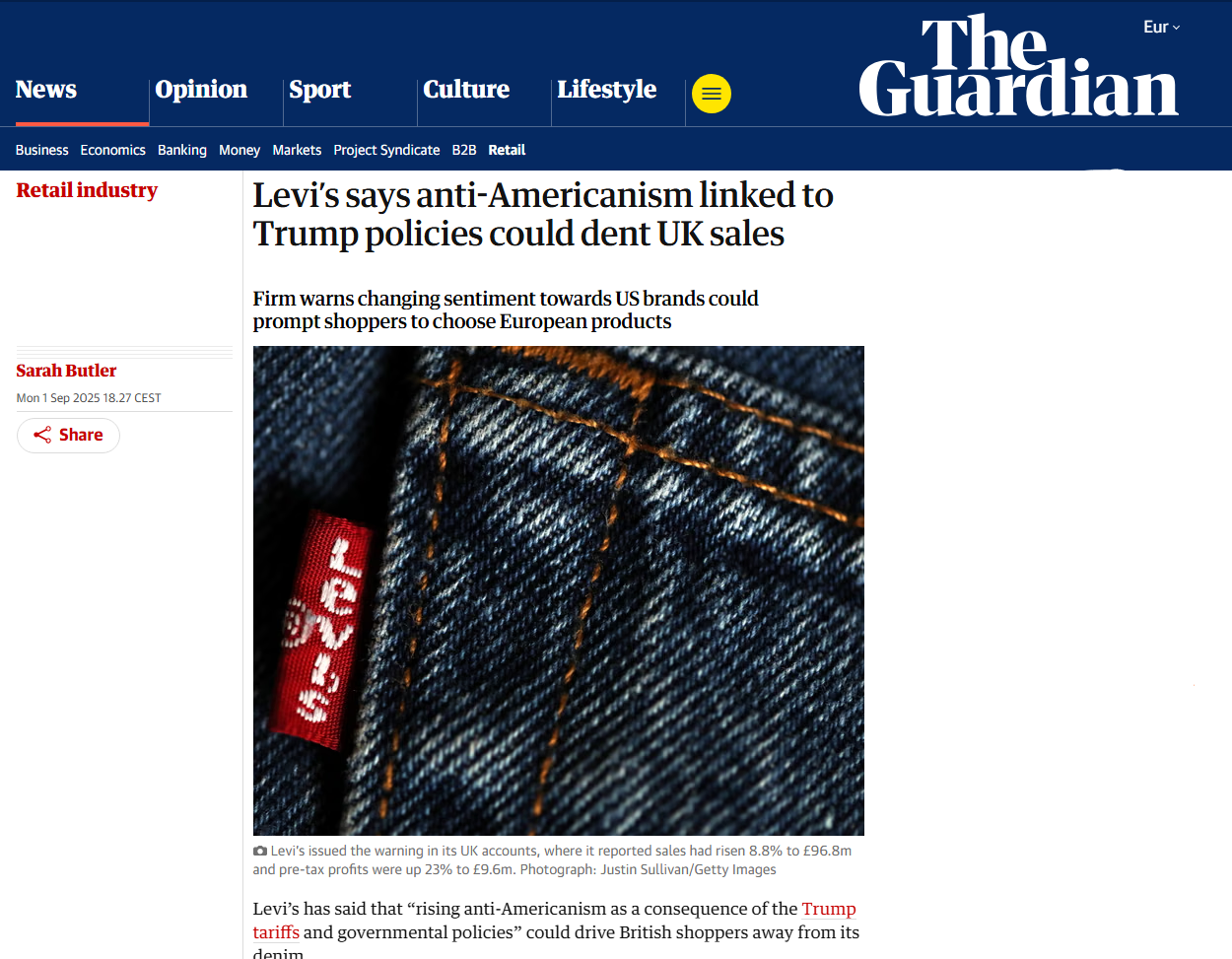
press September 2025 Are US fashion brands at risk of growing anti-American backl...
The Guardian by Lauren CochraneAchim comments on concerns that U.S. tariff policies may fuel anti-American sentiment abroad.
Sparked by Levi’s warning of potential sales losses in the UK, the debate centers on whether fashion brands face such risks. Achim notes that the backlash usually targets companies tied to the U.S. government, not fashion labels. He also points out that consumers continue to embrace American products, such as Apple and Netflix without hesitation. Debates around wokeness and sustainability have shown that consumers are usually less consistent and radical than media narratives suggest, often continuing to favor brands regardless of their reputation in those areas.
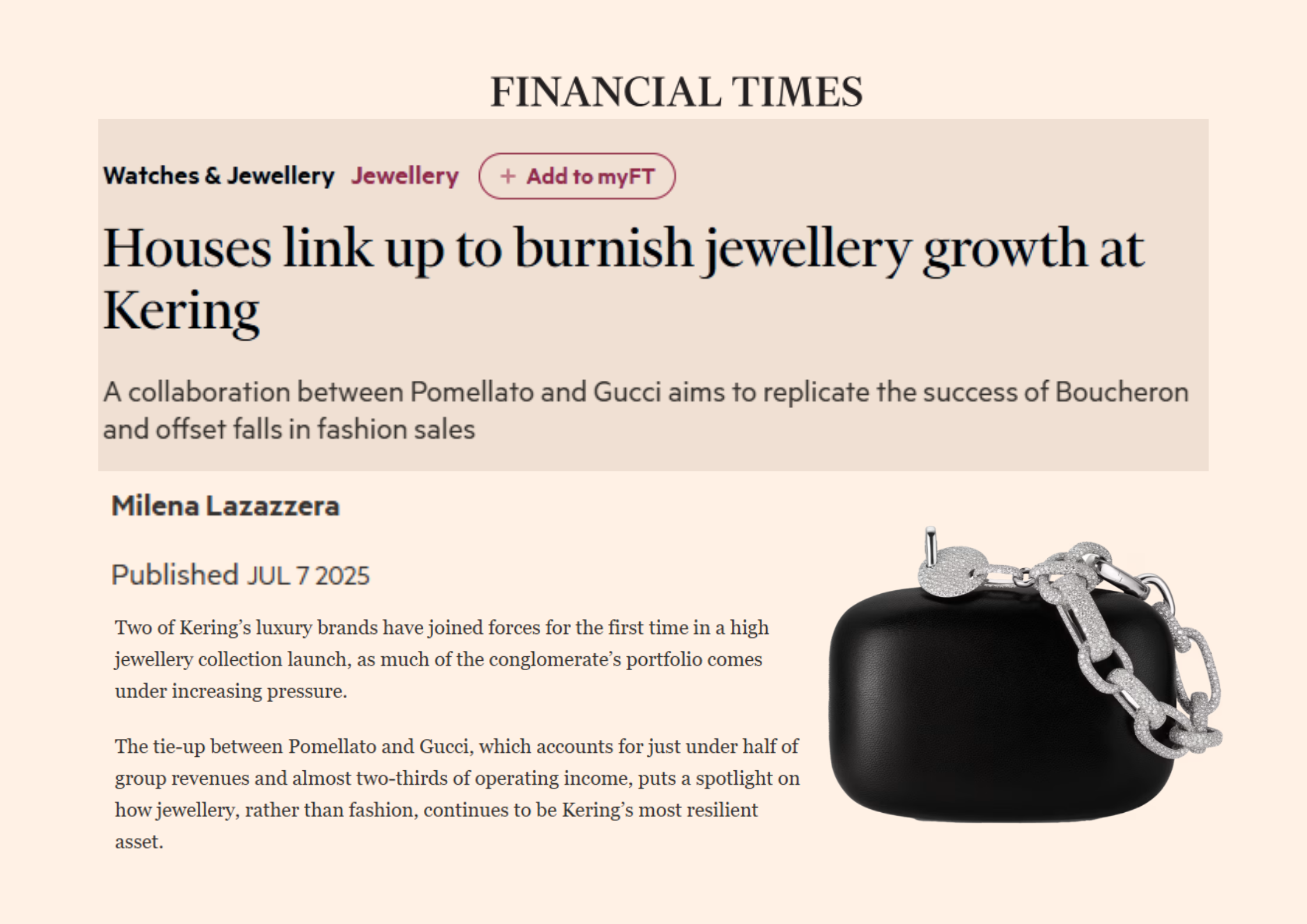
press July 2025 Houses link up to burnish jewelry growth at Kering
Financial Times by Milena LazazzeraAchim comments on the Gucci-Pomellato collaboration, viewing it as a smart way for Kering to navigate the current environment.
Kering brands Gucci and Pomellato have teamed up on a high jewelry collection to strengthen the luxury group’s jewelry segment, which has proven resilience even as its core fashion business faces pressure. With Gucci being in a transitional phase following the departure of Sabato De Sarno and ahead of Demna Gvasalia’s arrival as creative director, Achim states that the capsule serves as a strategic bridge to maintain momentum for the brand.
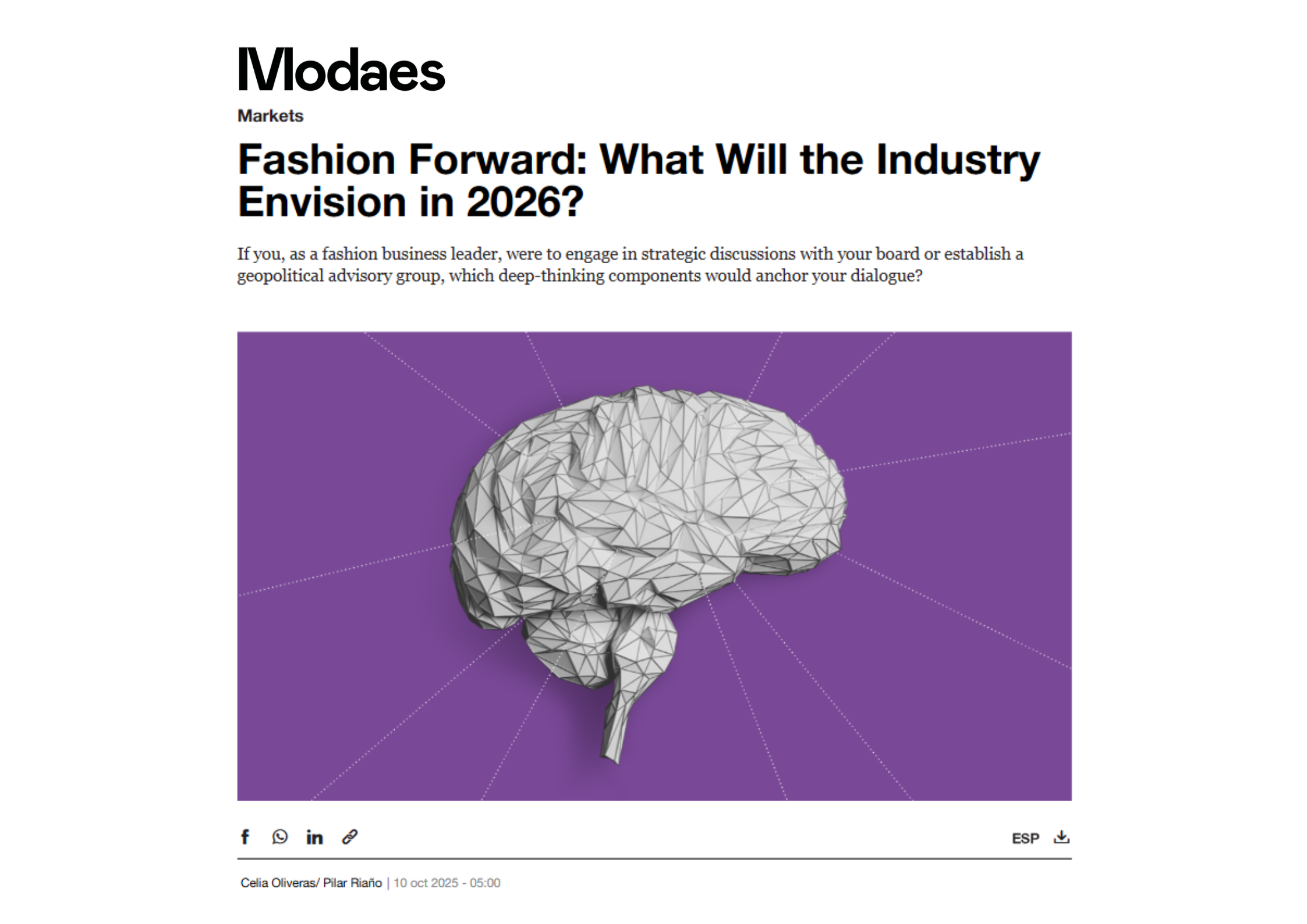
press October 2025 Fashion Forward: What Will the Industry Envision in 2026?
Modaes by Celia Oliveras, Pilar RianoAchim comments on what factors will shape the fashion industry in the year ahead.
As 2026 approaches, the fashion industry is bracing itself for another year of uncertainty. In a recent interview with Modaes, Achim shared his perspective on the structural forces shaping this reality. He notes that geopolitics, tariffs, and shifting regulations are driving market changes, leading companies to move away from centralized management towards distributed decision-making. He further points out that adapting to these circumstances comes at a high price, requiring businesses to carefully balance speed, costs and risk when making investment choices. Achim also highlights that, amid growing insecurity surrounding the impact of AI and the macroeconomic environment on the job market, consumers favor savings and smaller purchases over heavy expenditures.